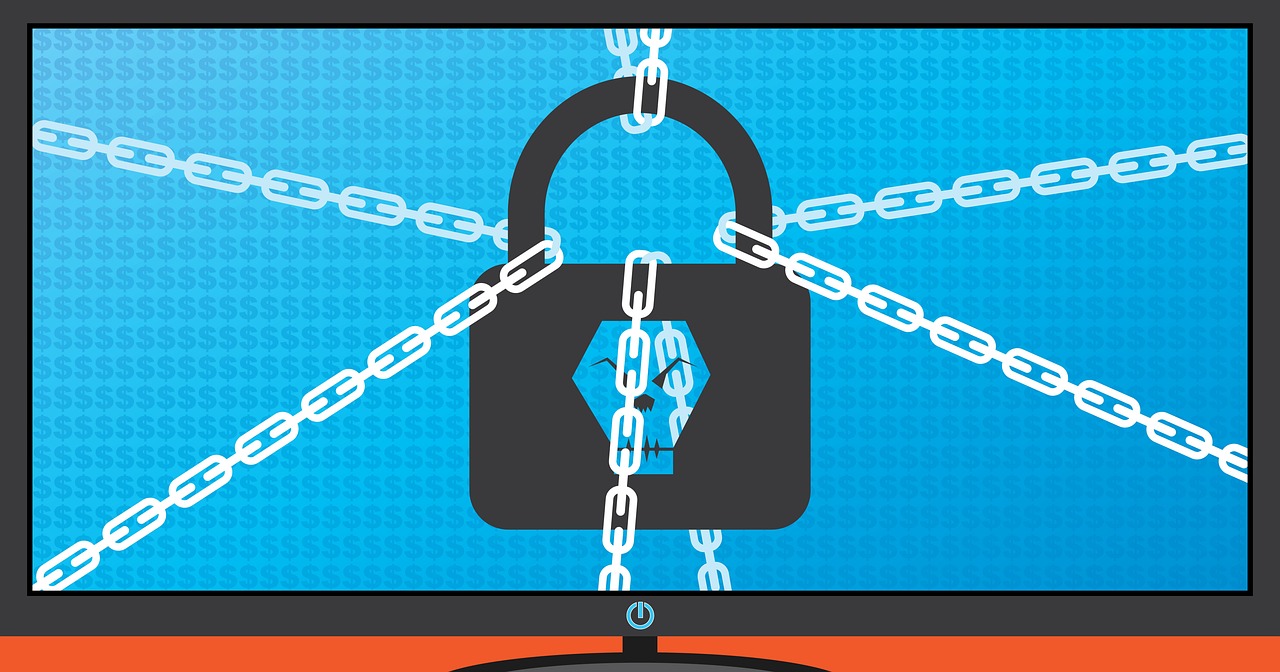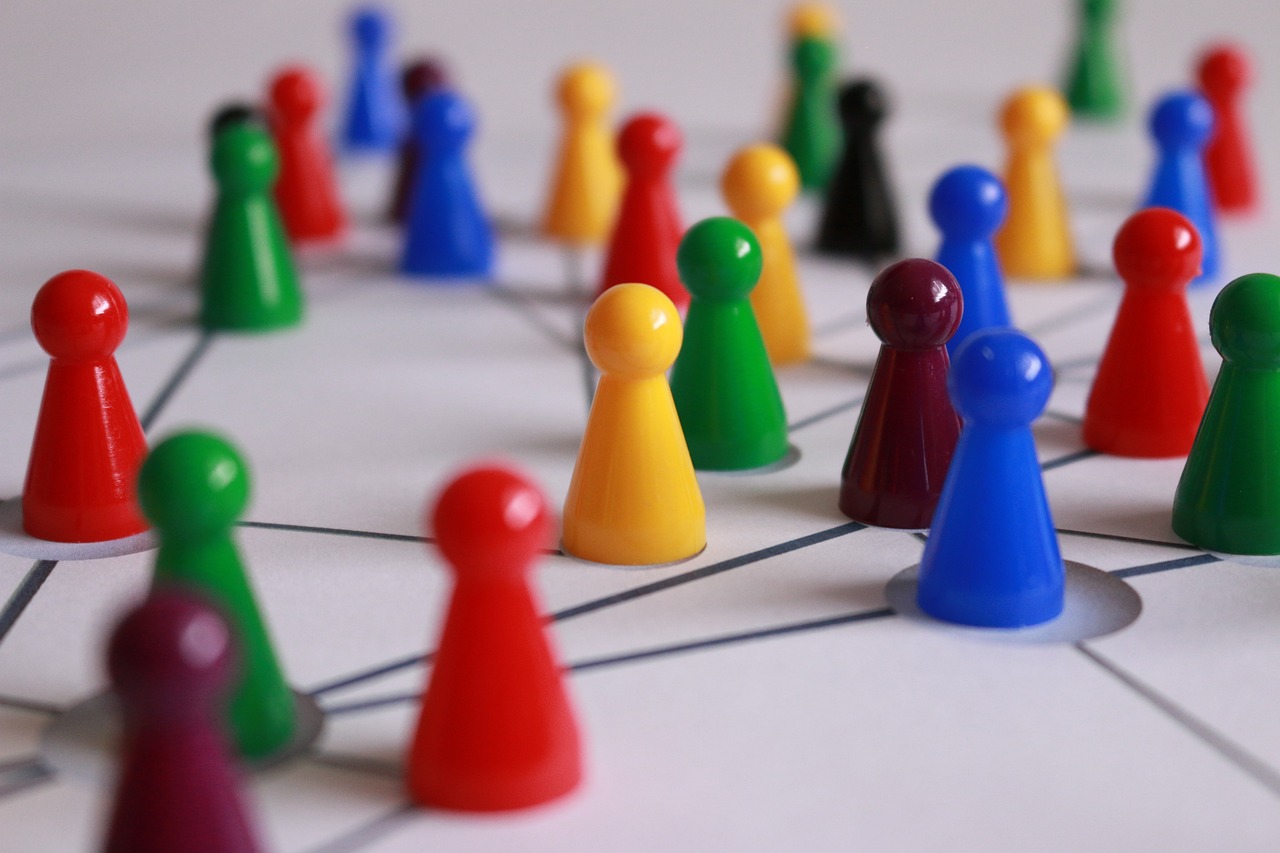Will You Pass the Test on Your Social Media Safety Skills?
In today's digital age, social media is more than just a platform for sharing photos and updates; it has become a vital part of our daily lives. However, with great connectivity comes great responsibility. Are you truly aware of how to protect yourself and your information online? This article explores essential social media safety skills that will help you assess your knowledge and practices. By testing your understanding of privacy, security, and responsible online behavior, you can ensure a safer digital experience for yourself and your loved ones.
Imagine stepping into a bustling marketplace filled with people from all walks of life. Just like in this marketplace, social media is a place where you interact with friends, family, and even strangers. But, just as you would keep your wallet close in a crowded space, you need to be vigilant about your online safety. Do you know how to navigate the complexities of privacy settings? Are you equipped to recognize scams that lurk behind seemingly innocent messages? This article will guide you through the maze of social media safety, empowering you to make informed choices.
As we dive deeper, you'll learn about the importance of customizing your privacy settings to shield your personal information from unwanted eyes. You'll also discover how to spot the red flags of scams and phishing attempts that can lead to identity theft or financial loss. By the end of this journey, you'll not only be able to identify potential threats but also take actionable steps to protect yourself. So, are you ready to test your social media safety skills? Let's get started!
When it comes to social media, privacy settings are your first line of defense. They allow you to control who sees your posts, who can send you friend requests, and even who can comment on your content. But how often do you review these settings? Many users set their accounts and forget about them, leaving their personal information vulnerable to prying eyes. It's crucial to regularly check and customize your privacy settings to ensure that only trusted individuals have access to your information.
Most platforms offer a variety of settings, such as:
- Profile Visibility: Decide whether your profile is public or private.
- Friend Requests: Control who can send you requests.
- Post Sharing: Choose who can share your posts and photos.
By taking the time to understand and adjust these settings, you can significantly enhance your online security. Remember, a little precaution goes a long way in protecting your digital identity!
Scams and phishing attempts are rampant on social media, targeting unsuspecting users every day. Have you ever received a message claiming you've won a lottery you never entered? Or perhaps an urgent request from a "friend" asking for money? These are classic examples of online scams designed to trick you into giving away your personal information or hard-earned cash.
Understanding the different types of scams is essential in recognizing them. Here are a few common ones:
- Lottery Scams: Messages claiming you’ve won a lottery, often requiring payment to claim your prize.
- Fake Charities: Requests for donations to charities that don’t exist.
- Investment Fraud: Promises of high returns on investments that are too good to be true.
By familiarizing yourself with these scams, you can better protect yourself and others from falling victim.
Phishing emails can be particularly deceptive, often appearing to come from legitimate sources. Look for these common characteristics:
- Generic greetings (e.g., "Dear Customer" instead of your name)
- Urgent language that creates a sense of panic
- Links that don’t match the official website URL
By keeping an eye out for these signs, you can avoid falling prey to phishing attempts that aim to steal your personal information.
In the digital world, your personal information is like gold. Protecting it should be a top priority. Here are some strategies to safeguard your information:
- Be cautious about sharing personal details, such as your address or phone number.
- Use strong, unique passwords for each of your accounts.
- Enable two-factor authentication wherever possible.
By adopting these best practices, you can manage your digital footprint and keep your information secure.
Encountering suspicious accounts is unfortunately common on social media. Knowing how to report and block these accounts is crucial in maintaining a safe online environment. Most platforms provide straightforward options for reporting spam, harassment, or fake accounts. Take action when you notice something off; your vigilance can help protect not only yourself but also your community.
Your online reputation is essentially your digital resume. It can impact your personal and professional life in ways you might not even realize. Cultivating a positive online presence is about more than just avoiding negative interactions; it’s about actively engaging in a way that reflects your values and character.
Managing your digital footprint involves regularly curating the content associated with your name. This can include:
- Regular audits of your social media profiles
- Removing outdated or unflattering content
- Sharing positive and constructive content that aligns with your personal brand
By taking these steps, you can ensure that your online presence remains a true reflection of who you are.
Social media is a platform for connection, but it also requires responsible engagement. Respectful communication fosters a positive online community. Remember, behind every profile is a real person with feelings. Engaging thoughtfully can make a world of difference in someone else's day.
Cyberbullying and online harassment are serious issues that can have devastating effects on individuals. It's essential to recognize the signs and know how to report such behavior effectively. Are you aware of how to support someone who might be a victim? Understanding the nuances of online interactions can help create a safer space for everyone.
Cyberbullying can manifest in various forms, including:
- Threatening messages
- Spreading rumors or false information
- Exclusion from online groups
Being aware of these signs can help you identify those in need of support and take action to help them.
For those affected by online harassment, numerous resources are available to provide support and guidance. Organizations like the National Domestic Violence Hotline and StopBullying.gov offer valuable information on how to seek help and take action. Remember, you are not alone, and there are people and resources ready to assist you.
Q: How can I make my social media accounts more secure?
A: Regularly update your privacy settings, use strong passwords, enable two-factor authentication, and be cautious about what you share.
Q: What should I do if I encounter a scam?
A: Report the scam to the platform and consider informing your friends to prevent them from falling victim.
Q: How can I support someone being cyberbullied?
A: Listen to them, offer your support, and encourage them to report the behavior to the platform.
Q: Is it safe to accept friend requests from strangers?
A: It's best to only accept requests from people you know personally to protect your privacy.

Understanding Privacy Settings
In today's digital world, where our lives are often shared with just a click, understanding privacy settings on social media platforms is more crucial than ever. Have you ever paused to think about who can see your posts, photos, or even your personal information? With the right privacy settings, you can take control of your online presence and protect yourself from unwanted eyes. Let's dive into why these settings matter and how you can customize them to suit your needs.
First off, privacy settings are like the locks on your front door—they keep your personal information safe from intruders. Each social media platform offers a variety of settings that allow you to control who can see your content. For instance, on platforms like Facebook, you can adjust your settings to limit your audience to friends only, or even create custom lists for specific groups of people. This ensures that your posts are shared only with those you trust.
Here’s a quick overview of common privacy settings you should be aware of:
- Profile Visibility: Decide who can view your profile—public, friends, or only you.
- Post Visibility: Control who sees your posts, whether it's friends, friends of friends, or a custom list.
- Tagging Options: Manage who can tag you in photos and posts, and whether you need to approve tags before they appear on your profile.
- Location Settings: Choose whether to share your location when you post or check in.
By taking the time to adjust these settings, you’re not just protecting your information; you’re also setting boundaries for your online interactions. But remember, privacy settings can change frequently as platforms update their policies. It's a good idea to revisit your settings regularly to ensure that they still align with your preferences.
Moreover, be aware of the information you share in your bio or in posts. Even with strict privacy settings, oversharing can lead to unintended exposure. Think of it like a diary—would you leave it open for anyone to read? Always be cautious about what you reveal. If you’re unsure about what’s safe to share, consider these guidelines:
- Avoid sharing sensitive personal information like your phone number or home address.
- Be cautious with photos that reveal your location, especially if they show your home or frequent hangouts.
- Think twice before sharing details about your daily routine, as this can give away too much information about your whereabouts.
When it comes to social media, you are the gatekeeper of your own information. By understanding and utilizing privacy settings effectively, you can create a safer online environment for yourself and your loved ones. So, the next time you post, ask yourself: “Who is really seeing this?” Taking a few moments to adjust your settings could save you from a world of trouble.
Q: Why are privacy settings important?
A: Privacy settings help you control who can see your information and posts, protecting your personal data from unwanted access.
Q: Can privacy settings change automatically?
A: Yes, social media platforms frequently update their features and privacy policies, so it’s essential to check your settings regularly.
Q: What should I do if I think my account has been compromised?
A: Immediately change your password, review your privacy settings, and report any suspicious activity to the platform.
Q: How can I educate others about privacy settings?
A: Share your knowledge with friends and family, provide them with resources, and encourage them to review their own privacy settings.

Recognizing Scams and Phishing Attempts
In today's digital landscape, being aware of scams and phishing attempts is more crucial than ever. With the rise of social media, cybercriminals have become increasingly sophisticated in their methods, making it essential for you to sharpen your skills in identifying these threats. Imagine walking through a bustling marketplace where every vendor is trying to sell you something. Some are genuine, while others are just looking to take your money and run. This is the online world, and knowing how to navigate it safely can prevent you from falling victim to deceit.
So, how can you spot these scams? First, it's important to understand that scams come in various forms. One common tactic is the lottery scam, where you receive an unsolicited message claiming you've won a large sum of money. Sounds tempting, right? But here's the catch: to claim your prize, you might be asked to provide personal information or even pay a fee upfront. Legitimate lotteries won’t ask for money or sensitive information up front, so always keep your guard up!
Another prevalent scam is the fake charity scheme. During times of crisis or disaster, scammers often create fake organizations to exploit your goodwill. They craft convincing messages that tug at your heartstrings, urging you to donate. Before you give, do your homework. Check the charity's legitimacy by looking them up on reputable sites like Charity Navigator or GuideStar. If you can’t find them, think twice before donating.
Additionally, there are investment frauds that promise unrealistic returns on investments. You might see ads on social media boasting about the latest cryptocurrency or stock that’s going to make you rich overnight. If it sounds too good to be true, it probably is! Always approach such offers with skepticism and do thorough research before investing your hard-earned money.
To further equip yourself, let’s break down some common types of online scams you should be aware of:
- Phishing Emails: These are fraudulent emails that appear to be from reputable sources, designed to trick you into providing personal information. Always check the sender's email address for any discrepancies.
- Online Shopping Scams: Fake websites that mimic legitimate retailers can lure you in with incredible deals. Before making a purchase, ensure the website is secure (look for HTTPS in the URL) and read reviews from other customers.
- Tech Support Scams: Scammers may pose as tech support representatives, claiming your computer is infected. They’ll ask for remote access or payment for services that are unnecessary. Always be cautious and verify before giving out any information.
Recognizing phishing emails is a critical skill. These emails often contain urgent language, such as “Your account will be suspended!” or “Immediate action required!” They may also include links that lead to fake websites designed to steal your credentials. Look out for poor grammar or spelling mistakes, as legitimate companies typically maintain high standards in their communications. If you’re ever in doubt, go directly to the company’s website instead of clicking on links in the email.
Now that you know how to recognize scams, let’s focus on how to protect your personal information. It’s essential to be mindful of what you share online. Avoid oversharing details like your phone number, address, or financial information unless absolutely necessary. Use privacy settings on social media platforms to control who sees your information. Regularly review your privacy settings and make adjustments as needed to keep your data secure.
Finally, remember that reporting and blocking suspicious accounts is just as important as recognizing scams. Most social media platforms have built-in tools to report fraudulent behavior. By taking action, you’re not only protecting yourself but also helping to create a safer online environment for everyone.
Q: What should I do if I think I've fallen for a scam?
A: If you suspect you've been scammed, immediately change your passwords, report the incident to the platform, and notify your bank if financial information was shared.
Q: How can I verify if an email is legitimate?
A: Always check the sender's email address for inconsistencies, look for poor grammar, and avoid clicking on links. Instead, visit the official website directly.
Q: Are scams only found on social media?
A: No, scams can occur through email, text messages, and even phone calls. Stay vigilant across all forms of communication.

Types of Online Scams
Online scams are like the digital equivalent of a wolf in sheep's clothing; they can look harmless or even appealing at first glance, but they often hide malicious intentions. Understanding the various types of scams can help you navigate the treacherous waters of the internet safely. Let's delve into some of the most common online scams that you should be aware of.
First up, we have lottery scams. These scams often come in the form of emails or messages claiming that you've won a lottery you never entered. The catch? They require you to pay a fee or provide personal information to claim your nonexistent prize. Remember, if it sounds too good to be true, it probably is!
Next, there are fake charity scams. These are particularly insidious, especially during times of crisis or natural disasters. Scammers create bogus charities and solicit donations, preying on your goodwill. Always research a charity before donating—look for official websites and reviews to ensure your money goes to a legitimate cause.
Investment fraud is another prevalent type of online scam. Scammers often promise high returns with little risk, luring unsuspecting victims into schemes that are more akin to gambling than investing. They might use persuasive tactics and even fake credentials to gain your trust. If someone is pushing you to invest quickly, take a step back and evaluate the situation carefully.
To help you better understand these scams, here’s a quick overview:
| Type of Scam | Description | Common Indicators |
|---|---|---|
| Lottery Scams | Claiming you have won a lottery you didn't enter. | Urgency, requests for personal info, fees to claim prizes. |
| Fake Charity Scams | Soliciting donations for non-existent charities. | High-pressure tactics, emotional appeals, lack of verifiable information. |
| Investment Fraud | Promising high returns with little risk. | Unsolicited offers, pressure to invest quickly, lack of transparency. |
Another common tactic is phishing, where scammers attempt to steal your personal information by masquerading as a trustworthy entity. They often send emails or messages that mimic official communications from banks or social media platforms, urging you to click on links that lead to fake websites. Always double-check URLs and never provide sensitive information through links in unsolicited messages.
Recognizing these scams is just the first step; protecting yourself is equally important. Stay vigilant, trust your instincts, and when in doubt, seek advice from trusted sources. Your awareness can be your best defense against these digital predators.
- What should I do if I think I've been scammed? If you believe you've fallen victim to a scam, immediately report it to the relevant authorities and your bank. Change your passwords and monitor your accounts for suspicious activity.
- How can I verify a charity before donating? Research the charity online, check for reviews, and look for their registration with official charity watchdog organizations.
- Are all unsolicited emails scams? Not all unsolicited emails are scams, but it's essential to approach them with caution. Verify the sender's identity before engaging with the content.

Spotting Phishing Emails
Phishing emails are like those sneaky wolves in sheep's clothing, trying to trick you into giving away your personal information. They often look legitimate, but once you take a closer look, you'll see the telltale signs that scream "fraud!" Recognizing these deceptive messages is crucial in protecting yourself from identity theft and financial loss. So, how can you spot these digital traps? Let's dive into some key characteristics.
First off, one of the biggest red flags is the email address itself. Often, phishing emails come from addresses that are slightly altered versions of legitimate ones. For example, instead of support@bank.com, you might see support@bank-secure.com. It’s a small change, but it can lead to significant consequences. Always check the sender's email address closely, and if it seems off, proceed with caution.
Next, be wary of emails that create a sense of urgency. Phishing attempts often use phrases like “Your account will be suspended!” or “Immediate action required!” to pressure you into clicking links or providing sensitive information quickly. This is a classic manipulation tactic that plays on your emotions. Take a deep breath and think before you act—legitimate companies will not rush you into making decisions.
Another common tactic is the use of generic greetings. Phishing emails frequently start with a vague salutation like “Dear Customer” instead of using your name. This is because the scammers often send these emails to thousands of people, hoping to catch a few unsuspecting victims. If the email feels impersonal, it’s a good indicator that it’s not from a trusted source.
When it comes to links within the email, hover over them before clicking. This simple action reveals the actual URL where the link will take you. If the link looks suspicious or doesn’t match the website of the company it claims to be from, don’t click it! For example, a link might display as www.yourbank.com, but hovering over it might show www.fakebank.com. Always verify before you click!
Lastly, be cautious of attachments. Phishing emails often include attachments that may contain malware. If you weren’t expecting an attachment from someone, or if it seems out of place, it’s best to delete the email without opening it. Think of it as a digital bomb—better safe than sorry!
In summary, spotting phishing emails requires a keen eye and a healthy dose of skepticism. Always check the sender’s email address, watch for urgency, look for generic greetings, hover over links, and be cautious with attachments. By keeping these tips in mind, you can significantly reduce your risk of falling victim to these online scams.
- What should I do if I suspect an email is a phishing attempt?
If you suspect an email is a phishing attempt, do not click on any links or open attachments. Report the email to your email provider and delete it immediately.
- Can phishing emails come from legitimate-looking addresses?
Yes, scammers can spoof email addresses to make them appear legitimate. Always verify the sender's email address carefully.
- What are the consequences of falling for a phishing email?
Falling for a phishing email can lead to identity theft, financial loss, and unauthorized access to your accounts. It's crucial to stay vigilant.

Protecting Personal Information
In our hyper-connected world, has become more crucial than ever. Every time you log into a social media platform, you leave behind a digital trail that can be exploited if not properly managed. So, how can you safeguard your personal data? First and foremost, be mindful of what you share online. It might seem harmless to post your location, but did you know that this information can be used against you? Always ask yourself, "Is this information necessary to share?"
One effective strategy is to adjust your privacy settings on each platform. Most social media sites offer customizable privacy options that allow you to control who sees your posts and personal information. For instance, consider setting your profile to private, which limits access to your content to only those you accept as friends. This small change can dramatically reduce the risk of unwanted attention or data breaches.
Another important practice is to regularly review your friend list and connections. Have you ever accepted a friend request from someone you barely know? It's time to reconsider that approach. By keeping your connections limited to people you trust, you can minimize the chances of sharing your information with potential scammers or malicious users. Remember, not everyone who sends a friend request has good intentions.
Additionally, be cautious about sharing personal details such as your phone number, address, or even your birthday. These pieces of information can be used to impersonate you or gain access to your accounts. If you must share such details, consider using temporary or disposable information where possible. For example, use a secondary email for sign-ups or services that require a phone number.
Moreover, it's essential to understand the concept of a digital footprint. This term refers to the trail of data you leave behind on the internet. To manage your digital footprint effectively, conduct regular audits of your online profiles. Look for outdated information, posts you no longer want to be associated with, or any data that could be misused. By cleaning up your profiles, you not only protect your personal information but also help in building a more positive online reputation.
Finally, always stay informed about the latest security threats and scams. The digital landscape is constantly evolving, and so are the tactics employed by cybercriminals. By being proactive and educating yourself about these risks, you can better protect your personal information and enjoy a safer online experience.
- How can I tell if my personal information has been compromised? Keep an eye on your accounts for unauthorized transactions or changes. If you notice anything suspicious, change your passwords immediately.
- What should I do if I receive a suspicious friend request? If you don't recognize the person, it's best to ignore or block the request. Trust your instincts!
- Are privacy settings the same on all social media platforms? No, each platform has its own privacy settings. It's important to familiarize yourself with them individually.
- Can I completely erase my digital footprint? While you can minimize it, completely erasing your digital footprint is challenging. Regular audits and careful sharing can help manage it effectively.

Reporting and Blocking Suspicious Accounts
In today's digital landscape, the prevalence of suspicious accounts on social media platforms can be alarming. These accounts can range from bots that flood your feed with spam to impersonators attempting to steal your personal information. Understanding how to report and block these accounts is crucial for maintaining your safety and security online. So, how do you go about it? Let’s dive into the essential steps you need to take.
First and foremost, it's important to recognize what constitutes a suspicious account. This includes profiles that have little to no personal information, a lack of genuine interactions, or those that send unsolicited messages. If you encounter an account that raises your eyebrows, take a moment to evaluate its activity. Is it behaving unusually? Are they trying to engage you in a way that feels off? Trust your instincts—if something feels wrong, it probably is.
Once you've identified a suspicious account, the next step is to report it. Most social media platforms have a straightforward reporting process. For example, on platforms like Facebook and Instagram, you can click on the three dots on the account's profile, select 'Report', and follow the prompts. This action alerts the platform's moderators to investigate the account's behavior. Remember, reporting is not just about protecting yourself; it also helps to create a safer online community for everyone.
After reporting the account, you should also consider blocking it. Blocking prevents the suspicious account from viewing your profile, sending you messages, or interacting with your content. This is particularly useful if the account is harassing you or attempting to engage in unwanted communication. To block an account, simply navigate to their profile, click on the three dots or settings icon, and select 'Block'. This action not only secures your personal space but also sends a clear message that such behavior is unacceptable.
In addition to these steps, it’s wise to regularly review your followers and friends list. You might be surprised to find accounts that you no longer recognize or remember connecting with. If you come across any that seem dubious, don’t hesitate to take action by reporting and blocking them. Keeping your social media environment clean is essential for your peace of mind.
To further enhance your understanding, here’s a quick summary table of steps to take when dealing with suspicious accounts:
| Action | Description |
|---|---|
| Identify | Look for accounts with incomplete profiles, unusual activity, or unsolicited messages. |
| Report | Use the platform's reporting feature to alert moderators about suspicious behavior. |
| Block | Prevent the account from interacting with you by blocking them. |
| Review | Regularly check your followers and friends list for any unfamiliar accounts. |
By taking these proactive steps, you can significantly enhance your social media safety. Remember, your online experience should be enjoyable and secure. Don't hesitate to take action when something feels off. After all, a safer digital community starts with you!
- What should I do if I receive a friend request from a suspicious account? It's best to ignore or block the request. If you feel it's necessary, you can report the account.
- Can I report an account without blocking it? Yes, you can report an account without blocking it. However, blocking is recommended for your safety.
- What happens after I report a suspicious account? The platform will review the report and take appropriate action, which may include removing the account or issuing a warning.

Building a Positive Online Reputation
In today's digital world, your online reputation is more important than ever. It's like your digital handshake; it can either invite people in or push them away. A strong online presence can open doors to new opportunities, whether you're job hunting, networking, or even just trying to connect with friends. But how do you build this positive online reputation? It starts with understanding that everything you post, share, or comment on contributes to your digital footprint. Think of it as a mosaic made up of countless pieces—each piece representing a moment or an interaction that shapes how others perceive you.
One of the first steps in building a positive online reputation is to manage your digital footprint. This means regularly auditing your online profiles and content. Ask yourself, "Would I want a potential employer to see this post?" If the answer is no, it might be time to hit that delete button. You can also curate your content by sharing articles, videos, or posts that reflect your values and interests. This not only showcases your personality but also positions you as a thought leader in your area of expertise.
Engagement is another crucial aspect of maintaining a positive online reputation. When you interact with others, whether through comments, likes, or shares, do so respectfully. Think of social media as a community gathering—would you shout insults across the room? Of course not! Treat others with kindness and consideration, and you'll foster a welcoming online environment. This not only enhances your reputation but also encourages others to engage positively with you.
To illustrate the importance of managing your digital footprint, consider the following table:
| Action | Impact on Reputation |
|---|---|
| Regularly auditing your profiles | Ensures outdated or inappropriate content is removed |
| Sharing valuable content | Positions you as knowledgeable and trustworthy |
| Engaging respectfully with others | Builds a positive community and encourages healthy interactions |
| Responding to feedback | Shows you value others' opinions and are willing to grow |
Additionally, consider the long-term effects of your online actions. Just like a garden, your online reputation requires nurturing. Regularly update your profiles, engage with your audience, and share relevant content. Over time, you'll cultivate a vibrant online presence that reflects your true self. Remember, your online reputation is not just about what you say; it's also about how you make others feel. So, be authentic, be respectful, and watch your positive reputation flourish.
- What is a digital footprint? A digital footprint is the trail of data you leave behind when using the internet, including social media posts, comments, and online interactions.
- How can I improve my online reputation? Regularly audit your online profiles, share valuable content, engage respectfully with others, and respond to feedback.
- Why is online reputation important? A positive online reputation can enhance your personal and professional opportunities, making you more attractive to potential employers and connections.
- What should I do if I find negative content about myself online? You can request removal from the platform, address the issue directly, or create positive content to overshadow the negative.

Managing Your Digital Footprint
In today's digital age, managing your digital footprint is more crucial than ever. Your digital footprint is essentially the trail of data you leave behind when you interact with the internet. This includes everything from your social media posts and comments to the websites you visit and the information you share online. Just like footprints in the sand, your digital traces can reveal a lot about you, and it’s important to be mindful of what you're leaving behind.
Imagine walking through a beautiful beach, leaving footprints that tell a story about your journey. Now, think about how that story could be interpreted by others. Similarly, your online presence can be scrutinized by potential employers, friends, or even strangers. A positive digital footprint can open doors, while a negative one can close them. Therefore, it's vital to actively manage it.
One effective way to manage your digital footprint is by regularly auditing your online profiles. This means taking the time to review what you’ve shared over the years. Are there posts that no longer represent who you are? Are there photos that you wouldn’t want a future employer to see? By conducting a thorough audit, you can identify and remove content that might harm your reputation.
Additionally, you should consider the content you curate. This involves being selective about what you share and engage with. Ask yourself: Is this content adding value to my online presence? Does it align with my personal or professional brand? By focusing on quality over quantity, you can create a more positive digital narrative.
Another important aspect of managing your digital footprint is understanding privacy settings across different platforms. Each social media site offers various privacy controls that allow you to limit who can see your posts, comments, and personal information. Make it a habit to revisit these settings regularly, especially after platform updates, to ensure your information remains protected.
Here’s a simple table summarizing some key practices for managing your digital footprint:
| Practice | Description |
|---|---|
| Regular Audits | Review and remove outdated or unwanted content from your profiles. |
| Content Curation | Share and engage with content that enhances your online presence. |
| Privacy Settings | Adjust your privacy settings to control who sees your information. |
| Think Before You Post | Consider the long-term implications of what you share online. |
Lastly, remember that your digital footprint is not just about what you post, but also how you interact with others. Engaging respectfully and positively can significantly enhance your online reputation. Think of your digital interactions as a reflection of your personality; the more genuine and thoughtful you are, the better your footprint will be.
In conclusion, managing your digital footprint is an ongoing process that requires attention and care. By being proactive about what you share and how you interact online, you can create a digital presence that reflects your true self and opens up opportunities rather than closing them off.
Q: What is a digital footprint?
A digital footprint is the trail of data you leave behind while using the internet, including social media posts, comments, and website visits.
Q: Why is it important to manage my digital footprint?
Managing your digital footprint is essential because it can affect your personal and professional reputation. A positive footprint can lead to opportunities, while a negative one can have adverse effects.
Q: How often should I audit my online profiles?
It's a good practice to audit your online profiles at least once a year, or whenever you feel significant changes have occurred in your life or online presence.
Q: Can I completely erase my digital footprint?
While you can minimize your digital footprint by deleting content and adjusting privacy settings, it is nearly impossible to completely erase it due to data retention policies of various platforms.

Engaging Responsibly with Others
In today's digital age, social media is more than just a platform for sharing thoughts and photos; it's a space where we interact with friends, family, and even strangers. The way we engage with others online can significantly impact our personal and professional lives. Engaging responsibly means being mindful of our words and actions. It's about fostering a positive online community where everyone feels safe and respected. But how do we achieve this? Let's dive into some essential practices!
First and foremost, respect is key. Whether you’re commenting on a friend's post or engaging in a heated debate, always remember that there’s a real person behind the screen. Think about how your words might affect them. It’s easy to forget this in the anonymity of the internet, but kindness goes a long way. If you wouldn’t say something to someone’s face, it’s probably best not to say it online. This simple rule can help maintain a respectful atmosphere and encourage others to do the same.
Moreover, be aware of the tone of your messages. Written communication lacks the non-verbal cues we rely on in face-to-face conversations, which can lead to misunderstandings. A sarcastic comment might come off as hurtful, while a genuine compliment might be misinterpreted as insincere. To avoid confusion, consider using emojis or GIFs to convey your emotions more clearly. These little symbols can add a touch of warmth and help express what you truly mean!
Another crucial aspect of responsible engagement is fact-checking. In an age where misinformation spreads like wildfire, it’s our responsibility to ensure that we’re sharing accurate information. Before hitting that “share” button, take a moment to verify the source. Is it credible? Does it provide evidence? By doing so, you not only protect your own reputation but also contribute to a more informed community.
Furthermore, consider the impact of your posts on your audience. Social media can be a powerful tool for raising awareness about important issues, but it can also contribute to negativity and division. Before posting, ask yourself: “Is this adding value to someone’s day?” If the answer is no, it might be worth reconsidering your content. Sharing positive stories, uplifting messages, or even just a funny meme can brighten someone’s day and promote a healthier online environment.
Finally, engagement is a two-way street. It’s not just about what you say but also about how you listen. Pay attention to the conversations happening around you. Respond thoughtfully to others' comments and be open to different perspectives. This not only enriches your own understanding but also encourages a culture of dialogue rather than debate. Remember, social media should be a space for connection, not conflict!
- What does it mean to engage responsibly on social media?
Engaging responsibly means interacting with others in a respectful, thoughtful, and constructive manner, considering the impact of your words and actions. - How can I deal with negative comments on my posts?
Responding with kindness or simply ignoring negativity can be effective. If necessary, you can also block or report abusive users. - Why is fact-checking important?
Fact-checking helps prevent the spread of misinformation and ensures that you are sharing credible and accurate information with your audience. - What are some ways to promote positivity online?
Share uplifting content, support others, and engage in constructive discussions. A little positivity can go a long way!

Understanding Cyberbullying and Harassment
In today's digital age, the concept of cyberbullying and harassment has become increasingly prevalent, affecting individuals across various age groups. Unlike traditional bullying, which often occurs face-to-face, cyberbullying takes place online, allowing aggressors to target their victims from the anonymity of their screens. This can happen through social media, messaging apps, or even in online gaming environments. The impact can be devastating, leading to emotional distress, anxiety, and in some cases, severe repercussions for the victim's mental health. So, how can we recognize these harmful behaviors and take action?
First, it's essential to understand what constitutes cyberbullying. It typically involves repeated, intentional harm inflicted through electronic means. This could manifest in various forms such as:
- Spreading rumors or lies online
- Sending threatening messages
- Excluding someone from online groups or activities
- Impersonating someone to damage their reputation
Recognizing these signs is crucial, not just for potential victims but also for bystanders who may witness such behavior. If you notice someone frequently changing their online habits, withdrawing from social interactions, or exhibiting signs of distress after using social media, it could indicate they are experiencing cyberbullying.
Additionally, online harassment can take many forms, including unsolicited messages, hate speech, or targeted attacks based on personal attributes such as race, gender, or sexual orientation. The anonymity of the internet often emboldens individuals to engage in behavior they might never consider in real life. This detachment can lead to an escalation of harassment, making it imperative to understand how to respond effectively.
So, what can you do if you or someone you know is facing cyberbullying or harassment? Here are some steps to consider:
- Document Everything: Keep records of all incidents, including screenshots and timestamps.
- Report the Behavior: Use the reporting tools available on social media platforms to flag inappropriate behavior.
- Block the Aggressor: Don’t hesitate to use blocking features to prevent further contact.
- Seek Support: Talk to trusted friends or family members about what you're experiencing.
In addition to these immediate actions, it's also vital to educate others about the impact of cyberbullying and the importance of respectful communication online. Schools and communities should foster open discussions about this issue, creating an environment where victims feel safe to speak up. Resources such as counseling services and online support groups can offer essential help for those affected.
Ultimately, understanding cyberbullying and harassment is about creating a safer online space for everyone. By recognizing the signs, knowing how to respond, and supporting one another, we can work together to combat this troubling trend in our digital world.
Q: What should I do if I witness someone being cyberbullied?
A: If you see someone being bullied online, it's crucial to support the victim. You can report the behavior to the platform and encourage the victim to document the incidents and seek help.
Q: Can cyberbullying happen anonymously?
A: Yes, one of the most troubling aspects of cyberbullying is that it often occurs anonymously. This anonymity can embolden aggressors, making it more challenging to hold them accountable.
Q: Are there legal consequences for cyberbullying?
A: In many jurisdictions, cyberbullying can lead to legal consequences, including criminal charges. Laws vary by location, so it's essential to understand the regulations in your area.

Recognizing Signs of Cyberbullying
In today's digital age, cyberbullying has become a pervasive issue that can have devastating effects on individuals, particularly among younger populations. Recognizing the signs of cyberbullying is crucial for early intervention and support. One of the first indicators may be a noticeable change in behavior. If a person who was once active on social media suddenly withdraws or becomes unusually quiet, it may be a red flag. Additionally, if they start to show signs of anxiety or depression, such as increased irritability or mood swings, it’s essential to pay close attention.
Another significant sign is the change in online activity. For instance, if someone begins to avoid certain platforms or becomes overly secretive about their online interactions, it could indicate that they are experiencing harassment. Often, victims of cyberbullying may also exhibit physical symptoms, such as headaches or stomachaches, which can stem from the stress and anxiety associated with being targeted online.
Furthermore, if you notice that someone is receiving negative comments or messages consistently, this could be a direct indication of cyberbullying. The language used in these communications can often be aggressive, humiliating, or threatening. Victims may also express feelings of loneliness or isolation, as the emotional toll of cyberbullying can lead to a sense of disconnection from peers.
To help you identify these signs effectively, here is a quick overview:
- Behavioral Changes: Withdrawal from social interactions and increased anxiety.
- Physical Symptoms: Frequent headaches or stomachaches without a medical cause.
- Online Activity: Avoidance of social media platforms or secretive behavior regarding online interactions.
- Negative Communications: Receiving aggressive or humiliating messages consistently.
- Emotional Distress: Expressing feelings of loneliness or isolation.
Recognizing these signs is just the first step. It's important to approach the situation with empathy and support, encouraging open communication. If you suspect someone is being cyberbullied, consider discussing your concerns with them in a safe and non-judgmental space. Remember, the goal is to provide a supportive environment where they feel comfortable sharing their experiences.
Q: What should I do if I suspect someone is being cyberbullied?
A: It's essential to talk to them in a supportive manner, encouraging them to share their experiences. Additionally, you can help them report the bullying to the platform and seek guidance from trusted adults or professionals.
Q: Can cyberbullying occur in adult populations?
A: Absolutely! Cyberbullying can affect individuals of all ages, and it’s important to recognize that adults can also be victims of online harassment.
Q: What are some effective ways to prevent cyberbullying?
A: Educating yourself and others about online safety, promoting respectful communication, and encouraging open discussions about online experiences can help prevent cyberbullying.
Q: Are there legal actions I can take against cyberbullying?
A: Yes, depending on the severity of the bullying, there may be legal options available. It's advisable to consult with legal professionals to understand your rights and options.

Resources for Victims of Harassment
Experiencing online harassment can be incredibly distressing, leaving individuals feeling isolated and vulnerable. Fortunately, there are numerous resources available to help victims navigate these challenging situations. Whether you’re dealing with cyberbullying, stalking, or any form of online abuse, it’s crucial to know that you’re not alone and that support is just a click away.
One of the first steps for victims is to reach out to trusted friends or family members. Sharing your experience can provide emotional support and practical advice. Additionally, many organizations specialize in helping those affected by online harassment. For instance, the National Domestic Violence Hotline offers resources and support for individuals facing various forms of abuse, including online harassment. Their trained advocates can assist you in creating a safety plan and provide guidance on how to report the abuse.
Another valuable resource is the Cyberbullying Research Center, which provides a wealth of information on understanding, preventing, and responding to cyberbullying. Their website includes articles, research studies, and tips for both victims and parents. They also offer a hotline where victims can seek immediate advice and support.
In addition to these organizations, many social media platforms have built-in reporting tools that allow users to report harassment directly. It's essential to familiarize yourself with these features, as they can help you take action against abusive accounts. For example, platforms like Facebook and Twitter provide options to block users, report content, and even seek legal assistance if necessary.
Moreover, if you find yourself in a situation that feels threatening or if you believe you are in danger, it’s crucial to contact local law enforcement. They can provide immediate assistance and help you understand your legal rights. It's also worth noting that many jurisdictions have laws specifically addressing online harassment, which can aid in your protection.
Lastly, consider seeking professional help. Therapists and counselors trained in dealing with trauma and harassment can offer coping strategies and emotional support. Many therapists now offer online sessions, making it easier to find help from the comfort of your home. Remember, taking care of your mental health during such a trying time is just as important as addressing the harassment itself.
In summary, while online harassment can feel overwhelming, numerous resources are available to support victims. From hotlines and support groups to professional counseling and legal assistance, it’s essential to utilize these tools to regain control over your online experience. Remember, reaching out for help is a sign of strength, and you deserve to feel safe and supported in your digital life.
- What should I do if I am being harassed online?
Reach out to friends or family for support, document the harassment, and report it to the platform and local authorities if necessary. - Are there legal protections against online harassment?
Yes, many jurisdictions have laws that address online harassment. It's advisable to consult with legal professionals to understand your rights. - How can I protect my privacy on social media?
Adjust your privacy settings, limit the information you share publicly, and be cautious about accepting friend requests from unknown individuals. - Where can I find emotional support?
Consider contacting organizations like the National Domestic Violence Hotline or seeking therapy from a licensed professional.
Frequently Asked Questions
- What are privacy settings, and why are they important?
Privacy settings are tools provided by social media platforms that allow you to control who can see your information and posts. They are crucial because they help protect your personal data from unwanted access, ensuring that only those you trust can view your content.
- How can I recognize a phishing email?
Phishing emails often contain urgent messages prompting you to click on a link or provide personal information. Look for signs like poor grammar, unfamiliar sender addresses, and generic greetings. If something feels off, it probably is!
- What should I do if I encounter a suspicious account on social media?
If you come across a suspicious account, you should report it to the platform immediately. Most social media sites have a straightforward reporting process. Additionally, you can block the account to prevent any further interaction.
- How can I build a positive online reputation?
Building a positive online reputation involves curating your content carefully, engaging respectfully with others, and regularly auditing your digital footprint. Think of your online presence as a garden; it needs regular care to flourish!
- What are the signs of cyberbullying?
Signs of cyberbullying can include sudden changes in behavior, withdrawal from social interactions, or reluctance to engage with online platforms. If you notice these changes in someone, it’s essential to reach out and offer support.
- Where can victims of online harassment find help?
Victims of online harassment can find help through various resources, including support hotlines, counseling services, and online forums dedicated to providing guidance. It’s important to know that you’re not alone and that help is available.



















